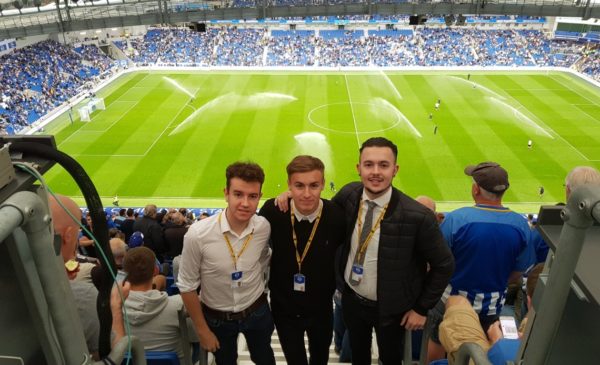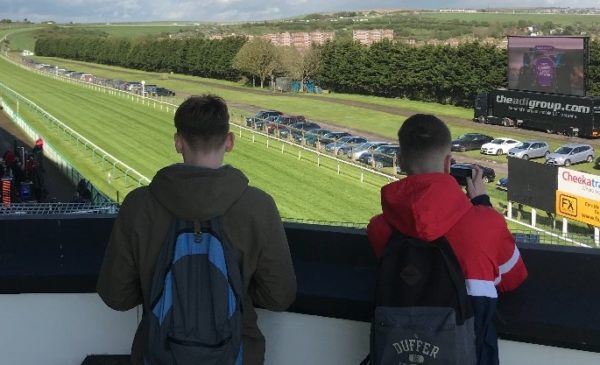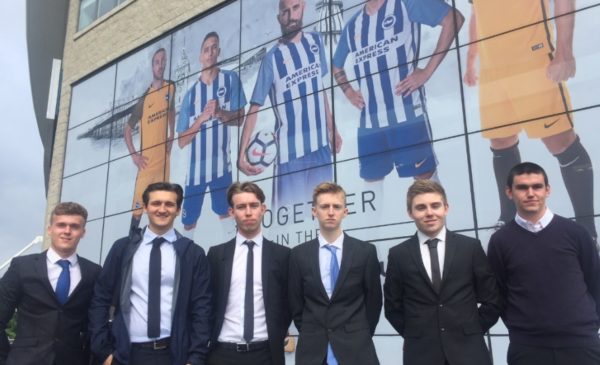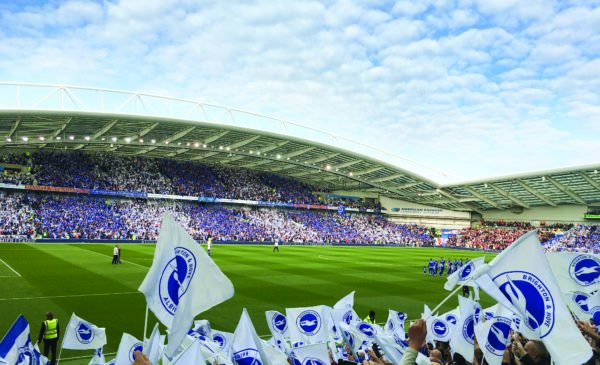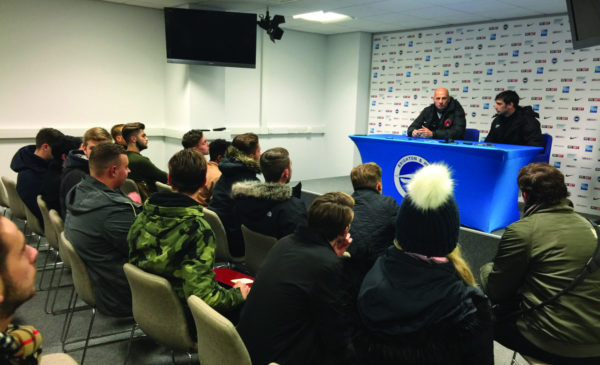The Beijing Olympics in 2008 had 4.4 billion television viewers worldwide (Statista, 2016). Major sporting events have global attraction. Athletes are admired and often idolised by fans and spectators who support them at these events. When an athlete performs at a major sporting event they have a global platform to speak about societal problems. Certain athletes from years ago such as John Carlos and athletes from the modern era like Colin Kaepernick have utilised their platform to talk about racial inequality, but how did the media respond?
“The bottom line is, if you stay home, your message stays home with you. If you stand for justice and equality, you have an obligation to find the biggest possible megaphone to let your feelings be known. Don’t let your message be buried and don’t bury yourself.” John Carlos (1968).
In this instance, an analysis of how athletes have used major sporting events to protest racial inequality will be made. A comparison of old-fashioned and contemporary examples is the main focus to understand if the media has changed in the way they portray such sporting acts. Using a range of media coverage including newspaper articles, journals and books for example, will enable me to explore this topic in-depth. The old-fashioned examples used are the Black Power Salute at the 1968 Olympics which included John Carlos and Tommie Smith and Jackie Robinson breaking the colour barrier in 1947 for Major League Baseball (MLB). The contemporary examples are Colin Kaepernick kneeling during the national anthem before National Football League (NFL) games as a protest against racial injustice and the Black Lives Matter (BLM) movement in English football. The angle that has been explored is that there has been a positive reaction from the media when analysing the examples, therefore looking to prove or disprove this angle by analysing a variety of media coverage.
Bradshaw and Minogue stated “Race remains one of the most powerful, divisive and erroneous concepts in the world”. “Unfortunately ‘race’ thinking is still prevalent in sport, which due to its popularity, influences audiences all over the globe” (Bradshaw & Minogue, 2020). Analysing media coverage will help to understand if this influence is prevalent in the media. Hylton (2009) defines racism as referring to “a range of beliefs, actions and policies that lead to the subordination of people due to their race, colour or culture”. The range of beliefs, actions and policies essentially lead to racial inequality which is presented in many forms. “Racism can be overt, direct and intentional, but it can also be subtle, indirect, structural and unconscious” (Bradshaw & Minogue, 2020).
The framing theory will be applied which Costello (2019) said: “expresses the process of how the public takes in information from media sources”. News framing and framing as a process will be explored more specifically to understand the media’s role in influencing public opinion and political practices. This enables me to assess how it has affected perceptions over time. “Entman (1993) noted that frames have several locations, including the communicator, the text, the receiver and the culture” (de Vreese, 2005). “These components are integral to the process of framing that consists of distinct stages: frame-building, frame-setting and individual and societal level consequences of framing” (de Vreese et al., 2002). The four components will be applied to newspaper articles more specifically.
The Black Power salute at the 1968 Olympics in Mexico is the first example. During the United States national anthem, John Carlos and Tommie Smith carried out the protest on the victory podium after finishing first and third in the 200m sprint and gave the black power salute. The photograph of the athletes performing the black power salute was one of the most influential images of the civil rights movement and became known as sport’s most iconic image of the twentieth century (Hughes, 2021). In an inside story with Sky Sports, Geraint Hughes interviewed John Carlos, who said: “The 1968 Mexico Olympics was a perfect stage. Not to win a gold medal but to take a stand” (Hughes, 2021).
The newspaper coverage of the Black Power salute at the Olympics in 1968 was mostly negative from white sportswriters at major news outlets. In the newspaper, Philadelphia Tribune, they had a ‘Sports Roundup’ section. On page 19, the story headline read ‘Smith and Carlos, Gutty or Nutty?’ and mentioned how the American population was divided in opinion (Philadelphia Tribune, 1968). In one corner you have a group that saw the act as “a just move, motivated by years of second-hand citizenship” and on the other hand a group that thinks “Smith and Carlos were damned rude and didn’t prove a thing” (Philadelphia Tribune, 1968).
A study was completed that compared the 1968 Olympic protest with the media. They found out that the iconic image of the pair “didn’t appear at all in the succeeding issues of Sports Illustrated and Newsweek buried it on page 78” (The Undefeated, 2018). If papers did include the image, it was often displayed as a small sidebar next to other images (The Undefeated, 2018). Opinions were often split at the same newspaper, at the Los Angeles Sentinel one reporter described the salute as “one of the greatest moments” whilst a colleague said the protest was “out of place” and “The Olympic Games is not a problem-solving platform” (1968). Opinion refers to the communicator and the receiver components of the framing process, but also the individual and societal level consequence of framing. It is enforcing that racial inequality is still occurring at this time at all levels and that many people have a difference in opinion on how the athletes used a major sporting event to talk about the issue.
Although many newspapers didn’t include a report of the protest or use it as a front page story for what would become one of the most influential images for the civil rights movement, there was a small quantity of positive coverage. The Pittsburgh Courier (1968) used the photo of athletes on the victory podium with the caption underneath ‘BLACK AND PROUD’. The text in this situation refers to the frame-building and frame-setting components of the framing process because in a time of black oppression, it is creating a frame for movements like the civil rights movements to show the American population they are willing to fight for racial equality. Many olympians at the Olympic Village that Smith and Carlos were removed from also praised the pair for their act of protest.
In 1947, Jackie Robinson broke the colour barrier in MLB when he became the first African American to compete for the Brooklyn Dodgers. This became a turning point in changing the complexion and history of the game that had segregated non-white players. Robinson experienced a lot of success in his career, he was named the “National League’s Most Valuable Player and was inducted into the Baseball Hall of Fame in 1962” (Britannica, 2021). “Robinson faced tremendous racial discrimination throughout his career, from Baseball fans and fellow players”, in which the Jim Crow Laws played a big part (History, 2021). The Jim Crow Laws refer to a racial segregation system in most “southern and border states between 1877 and mid-1960s” (Pilgrim, 2000). It was a list of strict anti-black laws whereby African Americans were labelled as second-class citizens. “Newspaper and magazine writers routinely referred to blacks as niggers, coons and darkies; and worse, their articles reinforced anti-black images and ideas” (Pilgrim, 2000).
These laws are relative to Robinson because they were still in operation during his career in MLB. Inside the April 23, 1947, issue of The Sporting News, an article about Robinson breaking the colour barrier was written. Despite reporting about Robinson’s Major League debut in a relatively positive light, a racial reference to the player was made. The headline reads “Negro star did his thinking the night before; Brooklyn players have been swell” (Aliperti, 2009). The use of the word ‘negro’ demonstrates that the Jim Crow Laws were still present and being used as an everyday term towards African American people. The use of this term in text would fall into the category, defined by Hylton, as ‘racism’ and when looking at the framing theory it would be relevant to the frame-building and frame-setting stages. Although, Robinson has broken the colour barrier for the first time in MLB history and is being reported by media outlets in a positive light, the racial segregation and political practices were still common, and subsequently so was racial inequality.
Fast-forward a few years to the 2010’s, athletes have still used major sporting events to protest racial inequality. Colin Kaepernick was an NFL player that excelled as a quarterback for the San Francisco 49ers. “Kaepernick was also a social activist, who was better known for kneeling during the national anthem before games to protest racial injustice and police brutality against African Americans” (Britannica, 2021). Kaepernick began his protests in 2016 and continued to do so until the end of the season when he became a free agent. No team in the NFL offered to sign him which led Kaepernick to sign a formal grievance which stated that owners were keeping him out of the game due to his advocacy for equality. This is an example of frame-building from the media which results in the individual and societal level consequences of framing. Taking history into account, like Smith and Carlos when they protested, politically active African American athletes got repercussions for their actions. I think the underlying truth in the matter is that NFL team owners decided to not pick Kaepernick, despite his performances in the League, due to his protests of racial inequality in the United States. Kaepernick not being picked because he wasn’t good enough was the frame the media had built and set, which influenced public opinion and led to the individual consequence of Kaepernick being without a club.
In 2018, Jackie Robinson was honored by MLB for breaking the colour barrier in baseball. Colin Kaepernick took to Twitter to share a quote from a passage in Robinson’s 1972 autobiography, ‘I never had it made’. The quote reads “I cannot stand and sing the anthem. I cannot salute the flag. I know that I am a black man in a white world” (Joseph, 2018). The contemporary example of Colin Kaepernick kneeling during the national anthem and Robinson refusing to stand and sing the national anthem, has almost identical attributes and shows racial inequality is still present. The correlation between the two examples is harrowing, African American athletes still feel their race is treated as unequal compared to their white counterparts and are still needing to protest during the national anthem for change. Protests won’t end racism, but it’s part of a bigger picture, people stop and think about the issue and need to do something about it.
Due to the similarities between both examples, Kaepernick has surfaced as Carlos and Smith’s successor. The media response is hardly unchanged and is often brushed to the side to avoid the actual talking point the athletes are protesting for. Lou Moore, a professor of African American history and sports history at Grand Valley State University, echoes this point: “All the naysayers want to do is talk about the flag or the anthem because they don’t want to be having these real conversations about racism” (The Undefeated, 2018). This is an example of how the media use different frames to influence their readers’ opinions on unrelated issues, whilst ignoring the focus of the protest.
A media frame analysis in 2017 of Kaepernick’s anthem protest identified six frames. The two frames looked at specifically were ‘individual action’ and ‘deflection and distraction’. The individual action discovered that Kapernick’s kneeling during the anthem was covered by the media in isolation, disconnecting from the intended message of protesting racial inequality and police brutality (Coombs et al., 2017). The deflection and distraction frame unveiled Kapernick’s protest attracted attention from the media, however part of that coverage deflected the reader away from police brutality towards other unrelated issues, away from Kapernick’s focus (Coombs et al., 2017). The media have deflected the focus of Kaepernick’s protests towards unrelated issues in an attempt to avoid talking about the subject of racial inequality. This influences public opinion because without subconsciously thinking, the readers brush past the actual issue at hand and turn their focus towards unrelated issues that the media are covering.
To look further into the media coverage of athletes I found a study which compared white and African American athletes. A section was dedicated to ‘Framing Race in Sports Media Coverage’. Keeping it specific to NFL and quarterbacks (Kaepernick’s position), Billings (2004) found the “predominant positive descriptor of African American quarterbacks in print media coverage was athleticism”. On the other hand, white quarterbacks were “praised for hard work (a controllable attribute) to overcome athleticism” (an uncontrollable attribute) in print media coverage (Billings, 2004). This is another example of how the media is indirectly presenting white quarterbacks as superior for being able to adapt to overcome uncontrollable attributes. Media narratives around “race” in sport locate athletes and players, often unconsciously, into racial or ethnic categories (Minogue & Bradshaw, 2020). Therefore, setting and building frames in the media like this affects how the public takes in information and subconsciously makes an informed opinion on the information they have consumed.
The last example is the formation of the Black Lives Matter (BLM), movement after George Zimmerman was acquitted for shooting Travyon Martin in 2012. BLM originated from a hashtag, #BlackLivesMatter and “morphed into the symbolic center of the national debate on police violence against minorities” (Hunter, 2018). The movement has grown year on year and since the murder of George Floyd in 2020, it has established itself worldwide. The BLM movement protest police brutality, racism and inequality experienced by black people dating back to slavery, but continues today (BBC, 2021).
Leaning on Colin Kapernick’s gesture of ‘taking the knee’, the England players at Euro 2020 decided to make the statement and do the same gesture before all of their games in the tournament. The gesture was met with a conflicting message from Boris Johnson to begin with, he encouraged the country to get behind the England players, but refused to condemn fans who booed the players ‘taking the knee’ (MacInnes, 2021). Belgium and Wales also took the action before games, but some teams protested racial inequality in other ways. Denmark applauded opponents that took the knee whilst Croatia and Czech Republic pointed to UEFA’s ‘Respect’ crest on their shirt, whilst some teams offered no protest (Evans et al., 2021). “Such differences highlight the increasingly fragmented nature of both the debate and symbolism related to how racial inequality is universally recognised” (Evans et al., 2021).
As much as you investigate, the coverage of ‘taking the knee’ at Euro 2020 and in English football was divided. The media reported that there were positives and reasons behind the gesture but almost all included why people are still booing players when they perform the action. In an interview with The Independent (2021) the Home Secretary, Priti Patel, was divided but was largely against ‘taking the knee’. She said: “Fans have a right to boo players taking the knee” and then proceeded to dodge the question on whether she would boo the players herself. The Home Secretary suggested that the protest leads to “gesture politics” that she wouldn’t support because of the “devastating impact on policing” (The Independent, 2021).
Dodging the question and mentioning unrelated issues as an answer to protest is the common theme I have found. When faced with the issue, the reason behind the protest gets ignored and there is a focus on the negatives behind the gesture or something unrelated.. The Home Secretary emphasised on the ‘devastating impact on policing’ protests the Black Lives Matter movement has caused. All members of the movement want equality, the sooner the issue of racial inequality gets addressed and leads to change, the easier it will become and these protests will not be needed. In an article from The Athletic (2021), they mentioned that Professor Doug McLeod said: “media coverage of protests has always gravitated towards dramatic videos and violence being prominently featured” more than anything else. This is because the media want to improve their ratings and divert more traffic towards their site. This can also be related to framing; it frames protests as a catalyst for causing more trouble in the wider picture even though the gesture of ‘taking the knee’ is peaceful.
When comparing old-fashioned examples with contemporary ones in relation to athletes using major sporting events to protest racial inequality, there are many differences, but also many similarities. The Jackie Robinson example included racial references in their headlines which would not be allowed in today’s society. In that respect there has been change, language used in the media such as newspapers when referring to a black athlete is no different to their white counterparts. However, the way the inequality is different in language is how they are described. Racism in the media today is more covert, as mentioned before in the Colin Kaepernick example, black athletes were praised for controllable attributes whereas white athletes were praised for innate and uncontrollable attributes.
The direction I analysed this topic was that there has been a positive reaction from the media when athletes use major sporting events to protest racial inequality. A variety of media coverage from many different sources, including newspapers articles, interviews and journal articles were analysed. I found that this theory was true but also false. Contemporary examples had more of a positive media reaction but there is always reference to the negatives the protest brings, sitting on the fence almost. When the framing theory was applied to the contemporary examples it was clear that frames were used more effectively to mask what they wanted to say. The media diverted their readers away from the focus of the protest to unrelated issues, to create a frame that the protest is more problematic and doesn’t solve racial inequality. In regard to the Jackie Robinson example, the media coverage had positive and negative reactions, but racial references were made explicitly, which is the difference compared to contemporary examples.
Media coverage of the Black Power salute had similarities and differences to Kaepernick’s. The main difference was that the image of the salute was hardly included and reactions in the media were tucked away in the back pages of the newspapers, again, attempting to divert from the issue. Compared to Kaepernick, the image of him ‘taking the knee’ was used at the forefront of most media coverage. Despite the differences in language, the images used were different and it made it clear to the reader’s the power the gesture can hold. The action spread worldwide, which led to players ‘taking the knee’ at Euro 2020 before each game of the competition as a symbol of protest against racial inequality. This is an example of how the use of framing in relation to images has changed, because it is much more difficult to avoid certain images with the amount of media coverage there is, compared to 1968.
The way athletes have used major sporting events to protest racial inequality is almost identical. Both the black power salute at the 1968 Olympics and ‘taking the knee’ by Kaepernick were protesting racial inequality and both performed during national anthems. This shows that despite media coverage, racial inequality has seen minimal progression differing from expectation. Almost 50 years between both the protests, but yet they are still protesting for the same thing; equality. The formation of the Black Lives Matter movement has made the issue become more eminent to a global audience through the media, but racial inequality is still a prominent dilemma in today’s society and protests will continue until there is change.
A difference that I became aware of from looking at dates of media reports, is that reports are done the same day, next day and continue to be reported on in the modern era. In contrast to media reports from old-fashioned examples, like Robinson breaking the color barrier and the 1968 Olympics, is that it was an age of weekly newsmagazines and reports completed days later. Therefore, old-fashioned examples were rolled out a lot slower in the media which made it easier to frame the protests differently and talk about unrelated stories to divert readers away from the issue.
To conclude, I analysed how athletes have used major sporting events to protest racial inequality and how the media reacted to old-fashioned and contemporary examples. I investigated this topic to understand if there have been significant steps in the right direction in solving racial inequality. The media is now accessed by a wider audience in today’s society who can receive information almost instantly. It is much more difficult to avoid the issue of racial inequality and protests, but the way framing is used in the media has changed to mask the reaction to it. There is no longer any use of racial terms when referencing African American athletes or people, but the language has a covert and often subconscious meaning which relates to racial inequality when referring to African Americans. Since protests almost 50 years apart are still pushing for the same outcome, I am aligned with Amy Bass’ opinion when it comes to American attitudes towards politically active black athletes, Bass said: “We’re still where we were on October 16, 1968. Literally nothing has changed, it’s the exact same story” (The Undefeated, 2018).
Bibliography
Aliperti, C. (2009). ‘A Couple of Early Jackie Robinson Magazines to Look For’. COLLECTINGOLDMAGAZINES.COM, April 2009, https://collectingoldmagazines.com/3062/early-jackie-robinson-magazines/. Date accessed 28/12/21.
Billings, A., (2004). Depicting the quarterback in black and white: A content analysis of college and professional football broadcast commentary. Howard Journal of Communications, 15(4), pp.201-210.
Bradshaw, T. & Minogue, D., (2019). Sports Journalism: The state of play. London. Routledge, pp.117-118
Campbell, A. (2021) ‘What is Black Lives Matter and what are the aims’. BBC, June 2021, https://www.bbc.co.uk/news/explainers-53337780. Date Accessed 30/12/21.
Conway, R. (2021). ‘Why should I support violence?’ Answering the objections to taking a knee’. The Athletic, June 2021, https://theathletic.com/2244447/2021/06/03/taking-knee-football-racism-violence-marxism-blm/. Date accessed 04/01/22.
Coombs, D.S., Lambert, C.A., Cassilo, D. and Humphries, Z., (2017). Kap takes a knee: A media framing analysis of Colin Kaepernick’s anthem protest. In 20th International Public Relations Research Conference Proceedings, pp. 48-62.
Costello, K., (2019). TAKING A KNEE: AN INTERPRETIVE STUDY ON PRINT NEWS COVERAGE OF THE COLIN KAEPERNICK PROTESTS, pp. 30-31.
De Vreese, C.H., (2005). News framing: Theory and typology. Information Design Journal & Document Design, 13(1).
Evans, A.B., Agergaard, S., Campbell, P.I., Hylton, K. and Lenneis, V., (2021). Sport, race and ethnicity in the wake of black lives matter: introduction to the special issue. European Journal for Sport and Society, 18(3), pp.187-191.
Harrison, C. (1968) ‘Smith and Carlos: Gutty or Nutty?’, Philadelphia Tribune, p.19.
History.com Editors (2021). ‘Jackie Robinson breaks color barrier’. History, April 2021, https://www.history.com/this-day-in-history/jackie-robinson-breaks-color-barrier. Date accessed 28/12/21.
Hughes, G. (2021). ‘Iconic 1968 Olympic protest’. Sky sports, October 2021, https://www.skysports.com/olympics/story-telling/15234/12242508/1968-iconic-olympics-protest-john-carlos-explains-what-happened-on-the-stand-and-why-its-still-relevant-today. Date accessed 21/12/21.
Hunter, J., (2018). Taking A Stand On One Knee: A Content Analysis Study of the San Francisco 49ers’ National Anthem Protests.
Hylton, K., (2008). ‘Race’ and Sport: critical race theory. Routledge, pp. 13
Kaepernick, C. (2018) 16 April. https://twitter.com/Kaepernick7. Date accessed 30/12/21.
MacInnes, P. (2021). ‘Boris Johnson refuses to condemn fans booing England taking the knee’. The Guardian, June 2021, https://www.theguardian.com/football/2021/jun/07/boris-johnson-refuses-to-condemn-fans-booing-england-taking-the-knee. Date accessed 03/01/22.
Maraniss, A. (2018). ‘THE MEXICO CITY OLYMPICS PROTEST AND THE MEDIA’. The Undefeated, October 2018, https://theundefeated.com/features/mexico-city-olympics-protest-media-john-carlos-tommie-smith/. Date accessed 24/12/21.
Pilgrim, D. (2012). ‘What was Jim Crow’. Ferris State University, September 2007. https://www.ferris.edu/jimcrow/what.htm. Date accessed 29/12/21.
Sengstacke, J. (1968). ‘BLACK AND PROUD’. The Pittsburgh Courier, October 1968, https://www.newspapers.com/image/38383534/?terms=black%20and%20proud&match=1. Date accessed 27/12/21.
Statista (2016). ‘Number of Olympic Games TV viewers worldwide from 2002 to 2016 (in billions)’. Media – TV & Film, August 2016, https://www.statista.com/statistics/287966/olympic-games-tv-viewership-worldwide/. Date accessed 20/12/21.
Stone, J. (2021). ‘Priti Patel says fans have right to boo England team for ‘gesture politics’ of taking the knee’. The Independent, June 2021, https://www.independent.co.uk/news/uk/politics/priti-patel-taking-knee-boo-england-b1865409.html. Date accessed 04/01/22.
The Editors of Encyclopaedia Britannica (2021). ‘Colin Kaepernick’. Britannica, October 2021. https://www.britannica.com/biography/Colin-Kaepernick. Date accessed 29/12/21.
The Editors of Encyclopaedia Britannica (2021). ‘Jackie Robinson’. Britannica, November 2021, https://www.britannica.com/biography/Jackie-Robinson. Date accessed 28/12/21.

